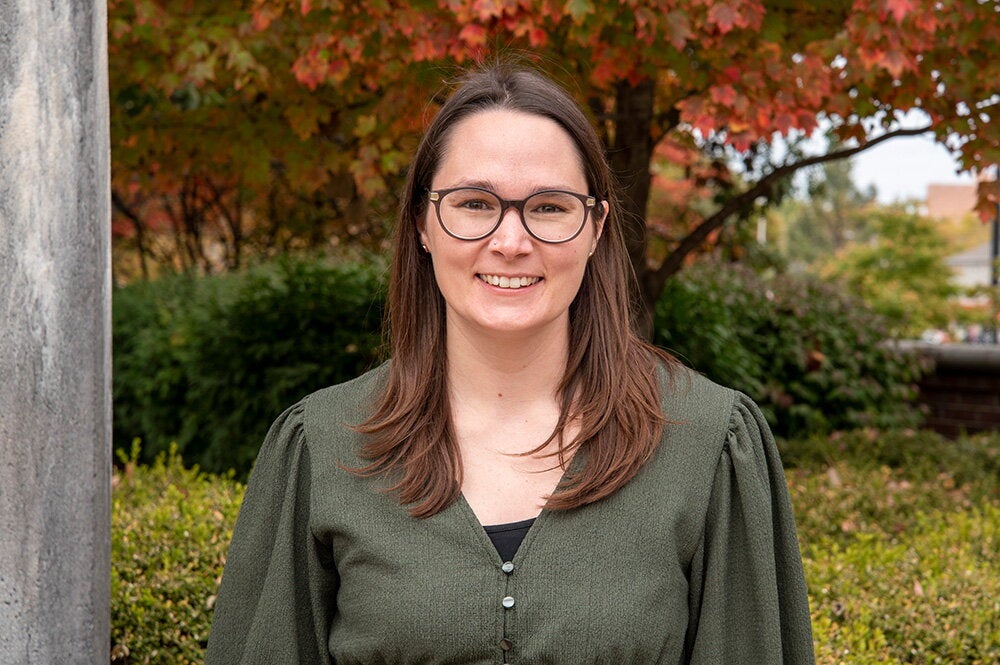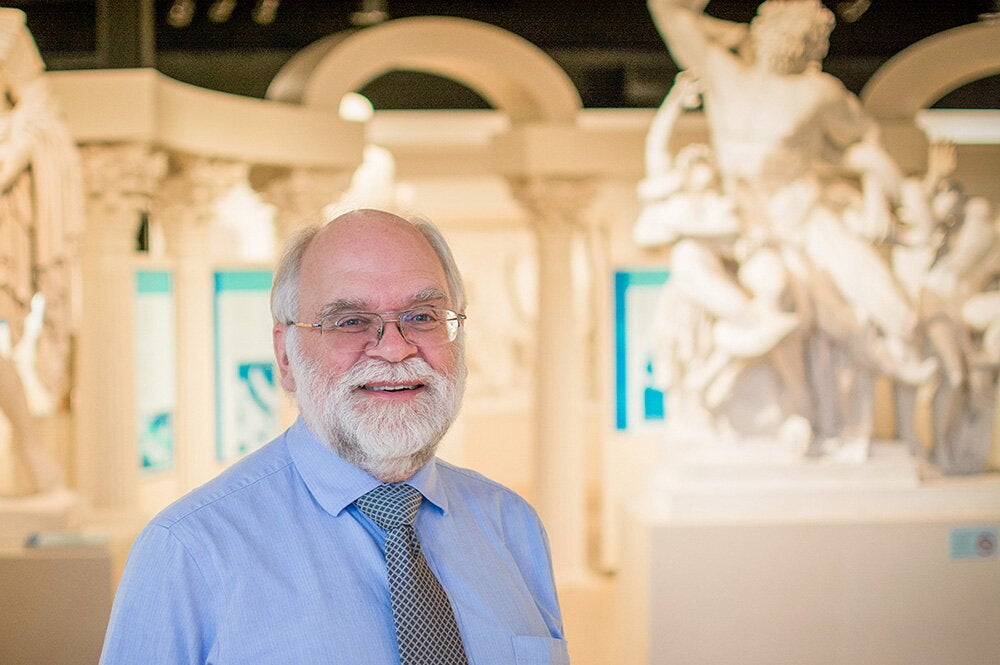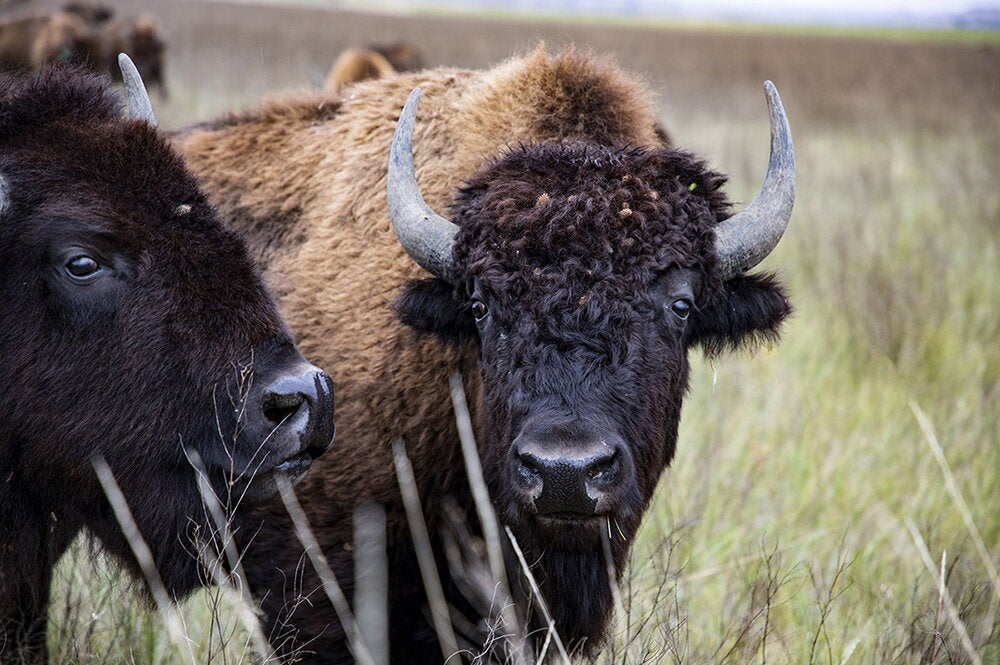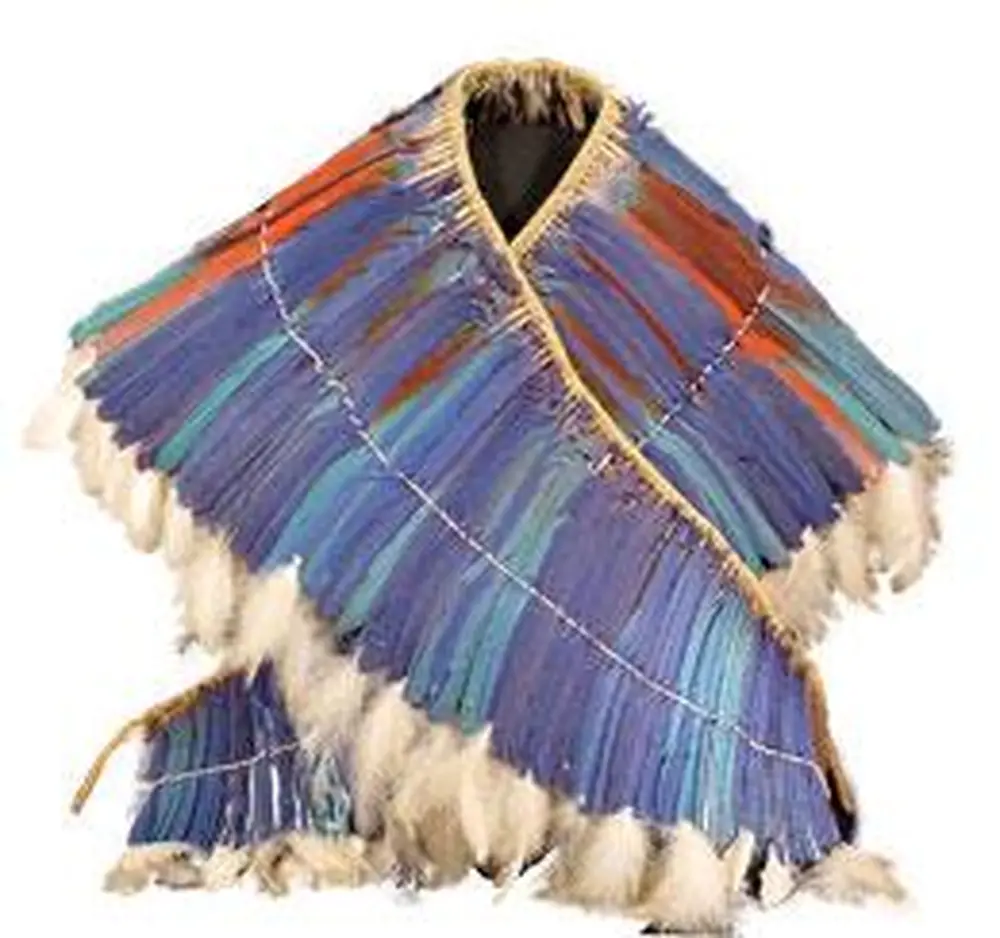

Apalai shaman's parrot-feather cape.
The skillfully handcrafted, turtle-shaped, wooden stool offers a simple but eloquent greeting to visitors entering the South American exhibit at the University of Illinois Spurlock Museum. However, this Achuar Chimbuà shaman's stool from Ecuador is only the first of many unique artifacts to draw visitors into a deeper discovery of the South American world.
"The shaman's stool was given to me as a gift by the maker of the stool for providing medical aid to him," says Norman Whitten, professor emeritus of anthropology and Latin American studies, as well as curator emeritus of the Spurlock Museum. "It is the only one here in the U.S."
Whitten says the South American exhibit is part of the "Gallery of the Americas," which makes the often-overlooked point that indigenous cultures are still alive today, despite living in the shadow of conquest. As the theme of the exhibit exclaims, "We are living! Causáunchimi!"
Additional rare and "must-see" artifacts in the exhibit include:
- The effigy of a Charapa Cocha house from Amazonian Ecuador. Inspired by a photo of the actual Charapa Cocha house, artist Estela Dagua masterfully made this ceramic effigy filled with turtle and anaconda symbolism in its artistic design. A photograph of the enormous real-life house, as well as a photograph of Dagua applying resin to the effigy house, are both featured on walls of the exhibit.
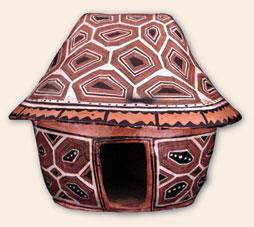
Miniature Charapa Cocha house effigy- The vibrant, multicolored Apalai shaman's parrot-feather cape from Northern Amazonian Brazil that is made of feathers, cotton, and plants;
- Napo Runa chime necklaces and Canelos Quichua beetle-wing necklaces;
- An Achuar Etsingrute bird feather headdress;
- A conch trumpet, Canelos Quichua bird-bone flute, and Achuar Tunduà large slit-gong;
- Indigenous tobacco and tobacco cutting board;
- 500 pieces of Canelos Quichua pottery, ceramic effigies, bead, feather, and wood artifacts from Amazonian Ecuador, donated by Whitten and his wife Dorothea;
- Tukuna bark cloth masks, paintings, and costumes from Columbia, donated by Charles Bolian and Donald W. Lathrap; and
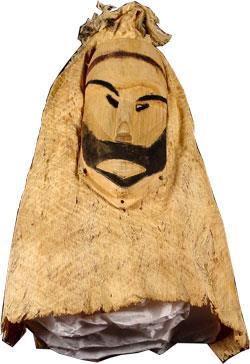
Tukuna bark cloth mask.- Brazilian tools, musical instruments, and cape, donated by Albert and Marguerite Carozzi.
Tukuna bark cloth mask.
Most of the artifacts were made from objects of an aquatic nature and were designed to resemble creatures that exist in the earth, water, under-earth, and sky-worlds. Prominent beings in these worlds are the jaguar (land), the anaconda (water), and the harpy eagle (sky).
About "90 percent of South America is the Amazon," Whitten says, explaining the aquatic nature of the artifacts. "It's a water and rainforest world with small and great rivers."
Artifacts are categorized within the themes of "Control of Power," "Presentation of Self," "Sounds of Spirits," and "Sustaining Life" to represent commonalities among the original people of South America.
"Control of Power" stresses the relationships among living people, people of the past, spirits, and human destiny. "Presentation of Self" offers examples of adornments that enhance human and spiritual beauty in the everyday world and during rituals. "Sounds of Spirits" present the musical components of human and spiritual relationships, while "Sustaining Life" illustrates the enduring facets of livelihood and domestication.
Photos courtesy of The Spurlock Museum, University of Illinois at Urbana-Champaign.
